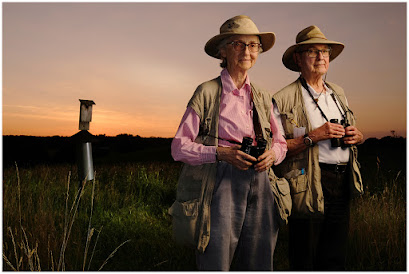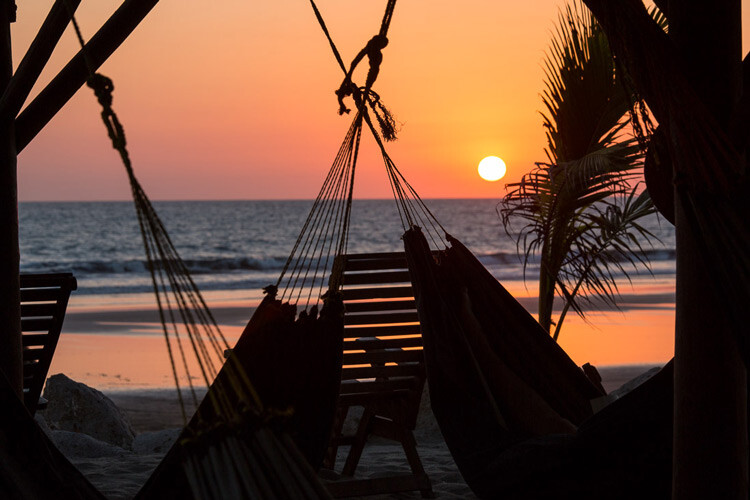The post 11 Sunset Photography Tips for Beautiful Results appeared first on Digital Photography School. It was authored by Darren Rowse.

If you’re looking to do gorgeous sunset photography, then you’ve come to the right place.
Because in this article, I’m going to share 11 simple tips that will instantly improve your sunset photos.
Specifically, I’m going to explain:
- How to capture beautiful sunset tones consistently
- How to create balanced, pro-level sunset compositions
- The best type of weather for sunset photos
- Much more!In fact, sunsets (and sunrises) aren’t even difficult to photograph!
Ready to become a sunset photography master?
Let’s dive right in.
1. For the best shots, plan ahead
While you can sometimes capture beautiful sunset shots without any forethought…
…the best shots usually come from real planning.
So scope out places that might be good for sunsets the day or two before your shoot. Look for interesting locations – locations where you can photograph the sun all the way down to the horizon, and where there will be opportunities for shots that include foreground elements and silhouettes.
Sunsets only take a few minutes, which is why you want to think about these elements before the sunset begins. Otherwise, you might miss the best shots.
Find out when the sun will set, then arrive at least half an hour beforehand. It’s often in the lead up to a sunset that the real magic happens.
And keep an eye on the weather. There are a variety of different types of sunsets that produce a range of different types of lights and patterns in the sky. Don’t just head out on clear days, because while these can produce some wonderful colors, it’s usually the days with (partial) clouds when the real action happens.
(Also, dust and smoke in the air can produce amazing results, too.)
Consider the equipment you might need. Take a tripod, lenses with a range of focal lengths, and extra batteries.
That way, when the sky turns beautiful, you’ll be ready!

2. Shoot at a variety of focal lengths
Most sunsets are photographed with wide-angle lenses, and these focal lengths can make for beautiful images. A lens in the 10-30mm range will give you sweeping shots of your sunset scene.
However, if you want the sun itself to be a main feature of the shot, you’ll need to zoom right in. The sun is just half a degree across, so when you shoot with a wide-angle lens, the sun will be tiny in the frame. If you want to highlight the sun, you’ll need to zoom in with a 200mm lens or longer.
(This, in turn, will increase your need for a tripod!)
Also, be hyper-aware of eye-safety concerns: looking at the sun is always dangerous. And it’s even more dangerous when you look at it through a telephoto lens. So if you do include the sun in your composition, never look through your camera’s optical viewfinder. Instead, use Live View to check your composition and exposure on the rear LCD.
(If you use a mirrorless camera, this won’t be an issue. You can safely look at the sun through the electronic viewfinder.)

3. Use the rule of thirds to improve your sunset photography compositions
The rule of thirds states that you should position key elements of your scene a third of the way into the frame.
So instead of putting the horizon in the center of the composition, put it toward the top or the bottom, like this:

Do you see how the horizon is a third of the way up from the bottom? That’s what the rule of thirds suggests.
And it’s not just about horizons. You can also use the rule of thirds to position the sun, foreground elements, background elements, you name it.
Of course, the rule of thirds isn’t a requirement. And you can break the rule of thirds for stunning results in certain situations.
But in general, the rule of thirds is a great starting point – so unless you have a good reason to do otherwise, I highly recommend you follow it!
4. Experiment with different exposures (to achieve a magical result)
First things first:
When doing sunset photography, you should always shoot with a semi-automatic or Manual mode. Don’t let your camera dictate your settings for you (in other words: get off Auto mode immediately!).
So before starting a sunset shoot, switch your camera over to Aperture Priority mode, Shutter Priority mode, or Manual mode.
And don’t just take one shot at one exposure. Instead, take a variety of shots at different exposures.
So while you can try a “standard” exposure based on your camera’s recommendation…
…don’t be afraid to underexpose by raising your shutter speed or narrowing your aperture. And don’t be afraid to overexpose by doing the opposite.

The great thing about sunsets is that there is no one “right” exposure. You can get stunning results with underexposure and overexposure; the key is to experiment.
(Personally, I tend to start with a relatively quick shutter speed, then slowly work down to slower shutter speeds for brighter, more luminous shots.)
5. Bracket often
In the previous tip, I talked about experimenting with different exposures.
But did you know that there’s a technique, called bracketing, that guides you in your exposure experimentation?
Here’s how it works:
First, take a photo using your camera’s suggested settings.
Then adjust the settings (either manually or via exposure compensation) to slightly underexpose the photo and then to slightly overexpose the photo.
So if your camera says to shoot at f/8, you would take your first shot at f/8, as recommended. But your second shot would be at f/5.6, and your third shot would be at f/11.
That way, you’d end up with a “standard” shot, a darker shot, and a brighter shot, all of which will give you different colors and effects.
It’s a good way to guide your experimentation, and it’s also a good way to create “insurance” photos – so that, if you overexpose the standard shot on accident, you still have a darker file on your memory card.
Make sense?

6. Auto Exposure Lock is your friend
Bracketing can be a lot of fun, but it also takes time – and it’s not the most precise way to create a well-exposed image.
That’s where Auto Exposure Lock (AEL) comes in handy.
Using AEL is simple. First, you point your camera at the area of the scene you want perfectly exposed, such as a beautiful foreground feature.
Then lock the exposure.
Finally, reframe the picture (while maintaining the exposure lock).
Basically, it lets you determine the exposure without interference from the ultra-bright sunset, which can wreak havoc on a camera’s meter.
Also note that you can use Auto Exposure Lock to create beautiful silhouettes; just point your camera at the brightest part of the sky, lock the exposure, and then reframe with a foreground subject. The result will look like this:

Cool, right?
7. For the best colors, get off Auto White Balance
Your white balance setting adjusts the temperature of the colors in your scene.
So depending on the white balance, you’ll end up with a cooler (bluer) photo or a warmer (redder) photo.
When the white balance is set to Auto, your camera will automatically deal with the color temperature. And while this can sometimes work, it often gives subpar results – where you lose the warm golden tones of your sunset.
So instead of using Auto White Balance, switch your camera to the Cloudy or Shade presets, which will warm things up a little.
Alternatively, if you’re shooting a sunset and you do want a cooler, moody shot, you can experiment with other white balance settings, such as Incandescent.
One more thing:
If you shoot in RAW, it’s true that you can always tweak the white balance during post-processing. However, this is often pretty inconvenient; after all, how much time do you want to spend adjusting the white balance in front of your computer?
Which is why it’s worth getting the white balance right in-camera.
8. Always bring a tripod for the sharpest results
If you’re shooting at longer shutter speeds, such as 1/60s and beyond, then a tripod makes a huge difference.
It’ll keep your camera stable – so that your files remain tack sharp.
When you’re out doing sunset photography, you don’t need to start the shoot with a tripod, because the minutes leading up to a sunset bring plenty of light.
But as the sun sinks on the horizon, a tripod will become more and more necessary. (And by the time the sun is gone, a tripod will be absolutely essential.)
Note that you might want to use a tripod for your whole photoshoot, especially if you plan to capture long exposures that feature moving water, like this one:

What if you don’t have a tripod? Or you forget to bring one?
In such cases, I recommend you stabilize your camera against an object. You can put it on the hood of a car, or you can just set it on the ground; whatever allows you to minimize movement as much as possible.
9. Don’t be afraid to focus manually
We all love autofocus – but sometimes, when shooting in extreme lighting conditions, autofocus just won’t get the job done. Your lens will hunt all around, and the shot will end up out of focus.
That’s where manual focus comes in handy.
Now, not all lenses support manual focus. Some only allow for autofocusing, in which case you’re out of luck.
But many lenses do let you focus manually (and you can generally activate manual focus by pushing the AF/MF switch on the lens barrel to MF).
So when your lens starts to hunt, don’t fret; just swap over to manual focus and keep shooting!
10. Shoot more than just the sunset
Here’s one of the many wonderful things about sunsets:
They don’t just create wonderful colors in the sky; they also cast a beautiful golden light that is great for other types of photography!
So as the sunset progresses, keep an eye on other photographic opportunities around you. For instance, you can capture portrait, landscape, or macro shots. In the light of the setting sun, it’ll all turn out amazing!

11. Keep shooting (even after the sun is gone)
A sunset constantly changes over time – which means that every additional minute is an opportunity for a different shot.
So don’t take a few shots and call it an evening. Instead, stick around and photograph the sun as it goes down. You can continue to capture the same composition, or you can test out different compositions; the key is to keep your camera out and your finger on the shutter button.
Also make sure to capture different exposures (bracket!) and consider working with different focal lengths, as I’ve discussed above.
And finally:
Don’t pack up once the sun is gone. The period after the sun has disappeared – called the blue hour – can be great for photography, too, thanks to its beautiful colors and ethereal light. So if you still have the energy, keep finding compositions until the colors have vanished completely from the horizon.

Sunset photography tips: conclusion
Now that you know these tips, you’re well on your way to capturing some stunning sunset photography of your own.
So the next time the sun starts to get low in the sky…
…grab your camera and head outside!
Amazing images await.
Now over to you:
Which of these sunset photography tips is your favorite? Are you going to use any of them the next time you photograph a sunset? Share your thoughts (and sunset photos) in the comments below!
The post 11 Sunset Photography Tips for Beautiful Results appeared first on Digital Photography School. It was authored by Darren Rowse.

















































You must be logged in to post a comment.